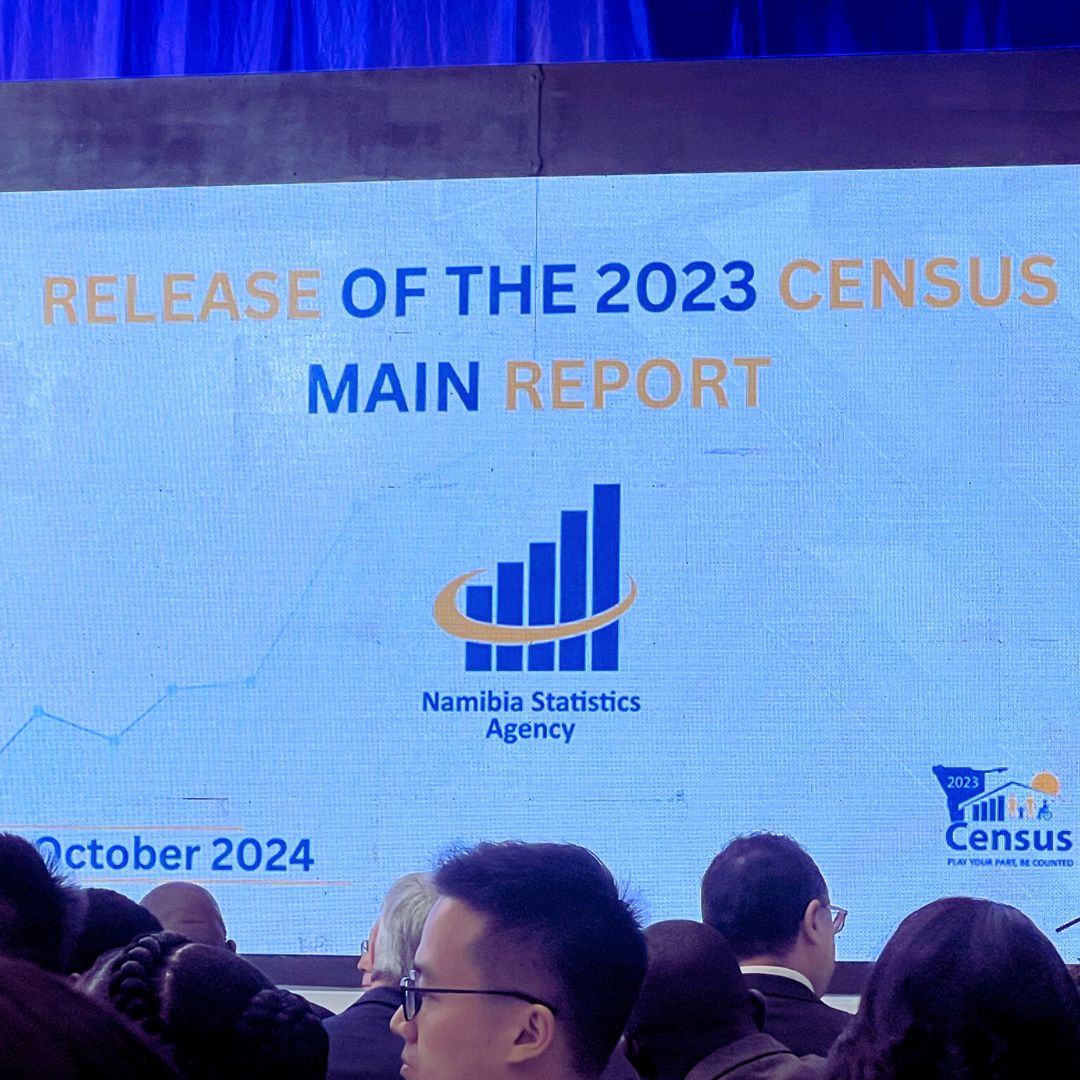Omanyano ovanhu koikundaneki yomalungula kashili paveta, Commisiner Sakaria takunghilile
Veronika Haulenga
Omanyano ovanhu koikundaneki yomalungula kashili paveta, Commisiner Sakaria takunghilile
Veronika Haulenga
Listeners:
Top listeners:
-
play_arrow
Omanyano ovanhu koikundaneki yomalungula kashili paveta, Commisiner Sakaria takunghilile Veronika Haulenga
The Namibia Statistics Agency has officially launched the main report of the 2023 Census, providing an in-depth view of the country’s population demographics, housing conditions, and essential statistical indicators. This comprehensive release will support informed decision-making for policies and resource allocation across various sectors. Speaking at the launch event, Ndiyakupi Nghituwamhata, Chairperson of the Statistics Board Committee, highlighted the importance of the report in driving evidence-based policy.
Audio Player
Also speaking at the launch, Statistician-General Alex Shimwafeni noted a significant population growth in certain regions, with some areas experiencing a 67.4% increase between the 2011 and 2023 census periods. This surge underscores shifts in population distribution that will be key in shaping Namibia’s development strategies going forward.
Audio Player
The Census shows that 62.6% of households in lack ownership or rights to the land they live on, with rural areas having more land ownership (69.7%) compared to urban areas (56.7%). Additional data shared by the NSA at today’s launch further reveals that regional differences are notable, with Omusati having the highest land ownership rate at 80.1%, while //Kharas has the lowest at 44%. Informal dwellings make up 28.7% of all households, with the highest concentrations in Khomas (46.9%) and Omaheke (46.8%) and the lowest in Omusati (8.2%), Zambezi (11%), and Ohangwena (11.3%).
Moreover, nearly half (46.6%) of Namibia’s 756,339 households depend on salaries and wages as their main income. The report shows that 13.8% rely on old-age pensions, 10.7% on farming, and 3.6% on government grants. In urban areas, 59.7% of households rely primarily on salaries, while this figure is lower in rural areas, at 30.8%.
The number:
71.1 percent of Namibia’s population is under 35 years.
Almost 70% of the Namibian population aged 15+ are Never Married, which is 5 percent point higher among male than female.
About 52% of the population above the age of 3 years own a mobile phone, of which 28.5 percent is a smartphone.
SMS and Radio are the highest ICT platforms used by the population to access information. However in urban areas, SMS and TV are the highest.
In total, there were 483, 141 persons on Namibia receiving social grants. The highest number are old age pensions and state maintained grants.
Male headed households top the charts with 51.0%
The number of private households in Namibia trippled since 1991.
More than 90% of households in Namibia drink safe water, with regional variation mostly above 80% except for the Kunene region.
The overall disability prevalence is at 4.4% More prevalent in rural areas at 5.8% and urban 3.2%.
About 52% of the population above the age of 3 years own a mobile phone, of which 28.5 percent is a smartphone.
Almost 70% of the Namibian population aged 15+ are Never Married, which is 5 percent point higher among male than female.
71.1 percent of Namibia’s population under 35 years.
Written by: Tonata Kadhila
Census 2023 Demographic Data Development housing statistics Income Sources informal settlements Land Ownership NSA Report Policy population data Population growth Resource Allocation Rural Statistical Analysis Urban
Windhoek Weather
Most popular

Mbumba signs off new benefits for retired political office bearers

Former FNB employee arrested after defraud pensioner off N$215, 000

Namdia Heist: More questions, lots of confusion

Omuhwahwameki Michael okuunganeka oshikonga shoku patitha oostola dho Rani moshilongo ashihe.

Windhoek woman loses N$60,000 to fraudsters
Copyright 2025 Future Media (Pty) Ltd | Website by Digital Platforms
Tel: +264 83 000 1000 | Email: news@futuremedia.com.na






